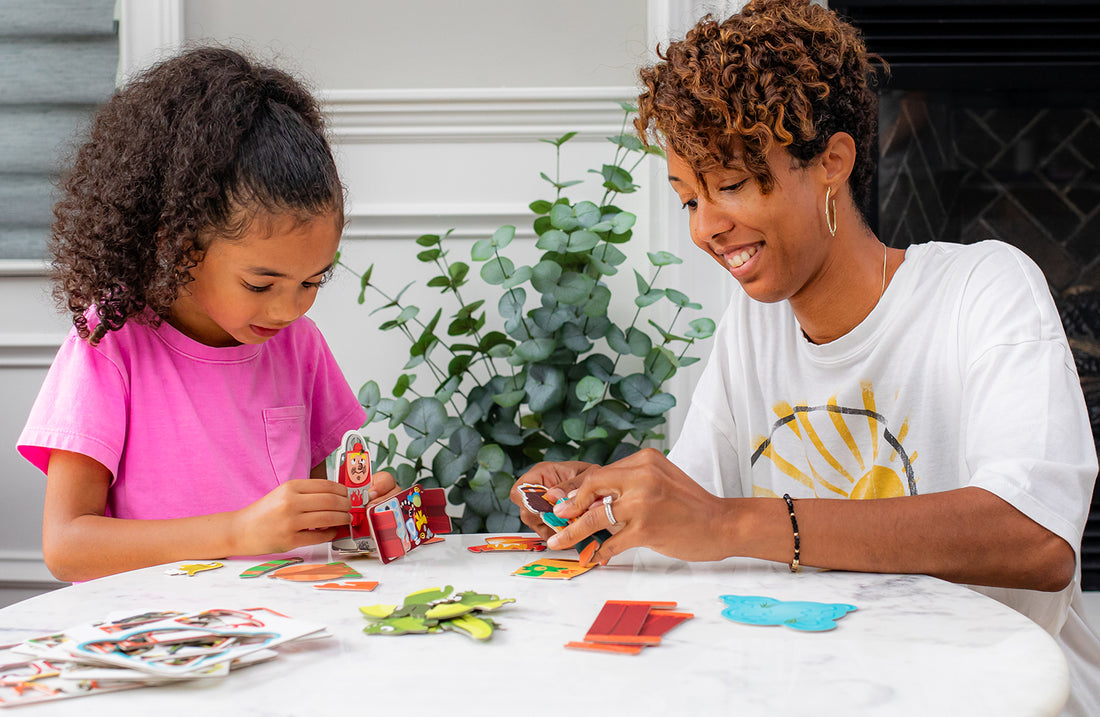
STEM Day Ideas for Parents of Preschoolers: Hands-On Activities to Inspire Curiosity
Imagine this: you’re watching your little one, eyes wide with wonder, as they gently pour water over a sandcastle they just built. Suddenly, a question pops up - “What will happen if I add more water?”
And there it is: the spark of curiosity that can light up an early love for science, technology, engineering, and math. National STEM Day, celebrated on November 8, is a fantastic opportunity to encourage kids to explore questions like these.
While STEM may sound like “big kid” stuff, there’s a lot you can do with younger children, even preschoolers. Let’s explore why STEM is so valuable for young children and how a few hands-on activities can make the day special for kids 3 and up.
What is National STEM Day at School?
National STEM Day is celebrated every November 8 to inspire children’s interest in science, technology, engineering, and math. The goal? To make learning STEM topics fun and accessible, planting seeds that can grow into a lifelong passion.
Many schools participate by organizing hands-on activities, experiments, and engineering projects. But you don’t need to stop there! Celebrating National STEM Day at home can be just as exciting and offers a great way to engage kids in meaningful, playful learning.
Why is STEM Important for Young Kids?
STEM education is packed with powerful benefits. While we often think about STEM for older children, introducing it to preschoolers and young children builds a foundation for their future.
Research shows that children who are exposed to STEM concepts early on develop critical thinking and problem-solving skills that become essential for lifelong learning. By getting involved in STEM activities, kids learn to ask questions, try new things, and explore answers.
These foundational skills help them adapt to a fast-paced, tech-driven world, setting them up to thrive as both students and future professionals.
Our kids are our future, right? STEM jobs are expected to grow significantly in the coming years and generally offer higher wages than other fields, even in non-STEM careers. Developing these skills early on can help kids access high-paying, stable careers as they grow.
What’s the Difference Between STEM and STEAM?
You might have seen the term “STEAM” alongside STEM. The “A” in STEAM stands for Art, adding creativity and design to the science, tech, engineering, and math mix. STEAM allows kids to apply STEM concepts in artistic and open-ended ways, supporting flexible thinking and expanding how they approach problems.
For preschoolers, STEAM activities like building colorful paper houses or experimenting with watercolor circuits are fantastic because they allow them to explore science concepts with art.
Plus it’s just plain fun.

Five Engaging STEM Activities for National STEM Day (or anytime, really)
Ready to get started? Here are some exciting, hands-on STEM activities perfect for 3-6 year olds:
- Building Balloon Cars: Use recycled materials to construct balloon-powered cars and race them as a family. This introduces physics concepts like force and motion in a playful, memorable way.
- Explore Architecture with Color and Light: Create paper structures, then add colorful, translucent "windows." Shine a light on them to see how colors mix and shadows form - a creative way to explore engineering and physics.
- Make an Apple Volcano: Mix baking soda and vinegar inside an apple to create a mini volcano. It's a fun, messy way to learn about chemical reactions.
- Storytelling with Curious Kingdom Castle: Another wonderful way to combine STEM with emotional learning. Kids can use characters to role-play scenarios, building empathy and storytelling skills in a way that feels like pure play. While they stack, build, and create their kingdom, they’re also learning essential STEM skills in spatial awareness and design.
- Bubbles: Mix up your own inexpensive bubble solution recipe and get blowing with one of these fun bubble science experiments.
Examples of STEM in Early Childhood
For young kids, STEM often happens in playful, natural ways. Sorting objects by size, building towers with blocks, or even observing a caterpillar turn into a butterfly teaches science and math concepts.
Early exposure helps kids connect everyday activities to science and math, creating an appreciation for learning that can stay with them for years.
With each hands-on experience, they build a foundation that will support their academic journey and life skills.
The Power of Access to STEM for All Kids
The benefits of STEM education are profound, but not all children have equal access. Increasingly, the goal of early STEM education is to make these valuable experiences available to all kids, regardless of background.
According to a recent national strategic plan, equitable access to STEM ensures that children from all walks of life can thrive in tomorrow’s workforce. By introducing young children to STEM concepts now, we help them build confidence and curiosity for a lifetime of learning.
Final Thoughts
National STEM Day is the perfect excuse to spark your child's natural curiosity and creativity. With simple, hands-on activities, you can make STEM learning fun and exciting - planting the seeds for a lifelong love of discovery. So get ready to explore, experiment, and celebrate the endless possibilities of science, technology, engineering, and math!
